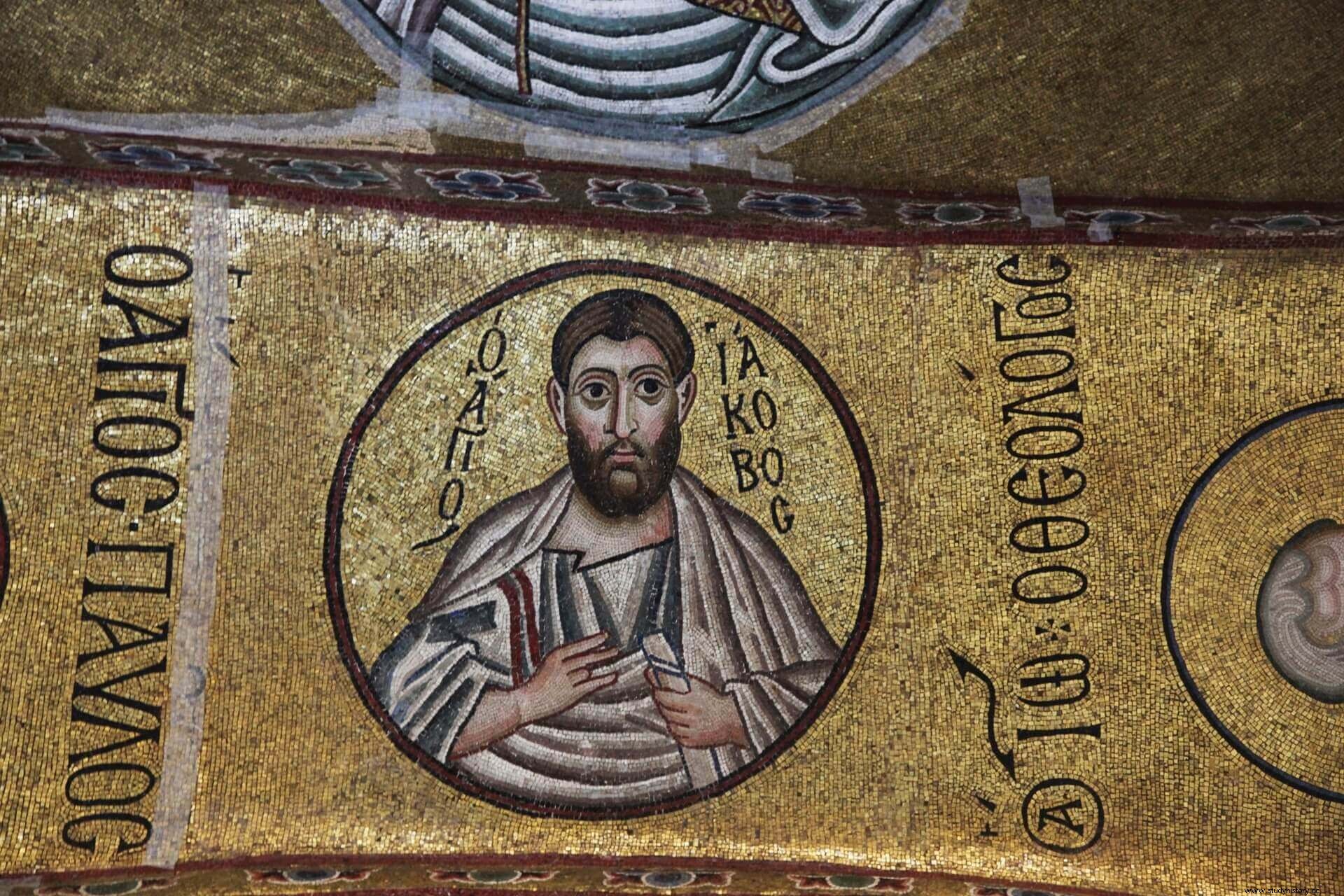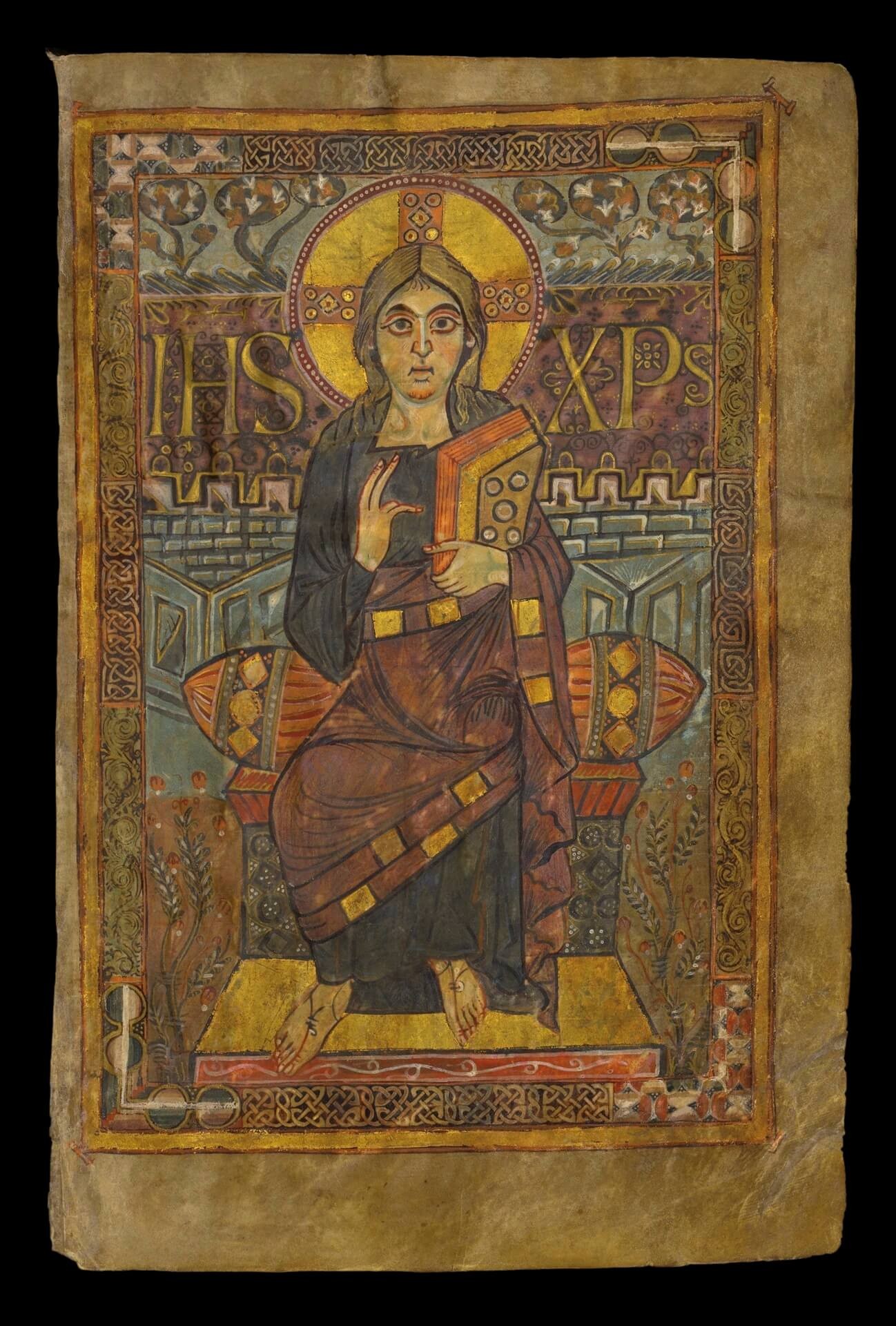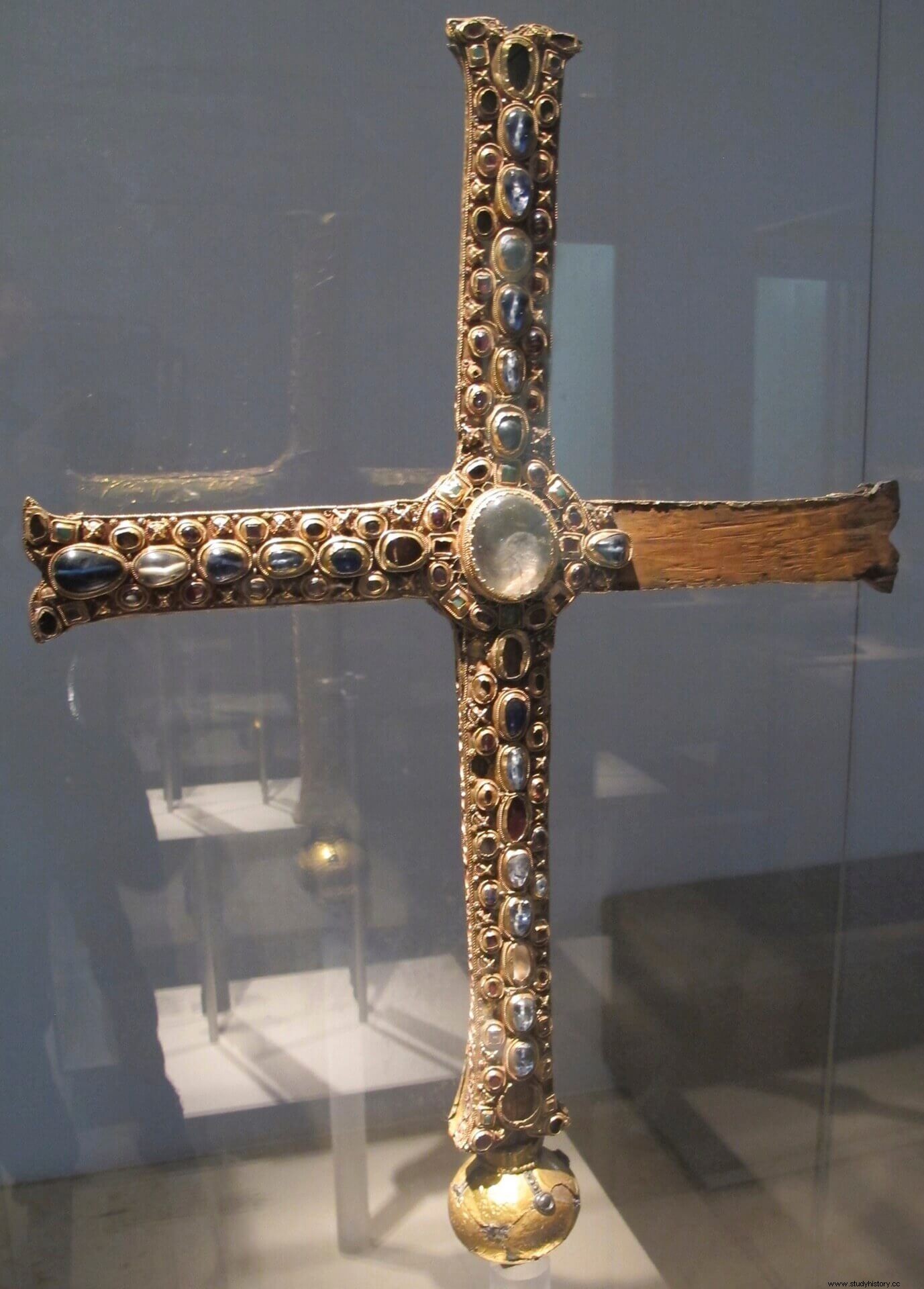
Although it is true that wars, also looting and military incursions have been very frequent throughout history, it is equally true that war is costly, painful and has a high price for the people and rulers who suffer from it. It is well known that war can have many reasons:among others, to conquer territory, obtain loot –material and human–, place or depose a king or gain control of resources. The war that is won is a show of strength before the defeated people but also before the subjects who feel safe under that ruler who led them into combat and won. It is also an effective distraction maneuver in the face of internal problems, a channel for the hatred and fury of the people towards an external enemy when what they have at home lacks all the necessary elements to sustain their legitimacy in power. Although the many wars he undertook Almanzor respond to the frequent battles that took place between Christians and Muslims in the Iberian Peninsula for eight centuries, they cannot detach themselves from their circumstance as absolute ruler of al-Andalus on behalf of a puppet caliph, Hisham II, whose seclusion in the palace was justified by the magnificence of the power and good work of his chamberlain (hayib ); in other words, for his victories. It must not be forgotten that the caliph not only possesses executive and military authority, but holds religious authority over the community and in the minds of his pious Muslim subjects is Muhammad's substitute on earth. Almanzor held power and, consequently, had to permanently justify his legitimacy through a religious authority that he never nominally enjoyed.
Very few Andalusian characters are known as much as Almanzor, and this is not the result of chance. We know about him even the origin of his mother, a fact that we do not know about many emirs and caliphs, or the name of their wives, and a rich anecdote survives in Arabic texts about his public and private life with which historians wanted to illustrate his personality until progressively turning him into a almost legendary character . His government represents in the eyes of his biographers the end of the heyday of Umayyad power in al-Andalus and, above all, the last period of Andalusian military rule over the Christian territories. This power is summed up magnificently by Almanzor's fifty successful campaigns in different parts of the Peninsula. In all of them, Hisham's chamberlain showed his personal capacity and the strength of his armies, but in one of them, in addition, he wanted to capture the superiority of Islam over Christianity. The moment chosen to attack Santiago de Compostela , the year 997, was not accidental, as were the descriptions that illustrate this unprecedented event. The historiographical analysis of these passages shows that there is a narrative construction –reconstruction, if you will– of the events aimed at legitimizing the Andalusian leader.
Three points will be briefly reviewed in these few pages:firstly, what are the known facts about this campaign through Arabic sources; next, what image did the Andalusians have of Galicia and of the sanctuary of the apostle Santiago; and, lastly, what was happening in Córdoba at that time to make Almanzor interested in undertaking such an unprofitable action from a material point of view and in such a distant land.
The campaign and looting of Compostela. Summer of 997
The Santiago oil It represents the only Andalusian incursion in the extreme north of the peninsula since the defeat of Covadonga. Almanzor never entered Asturias, Cantabria or the Basque coast and it can be stated that the limits of his campaigns in the north of the western peninsula were the cities of Coimbra, Montemor, León and Zamora. Some chroniclers highlight the distance from Santiago and the difficulty in accessing that city through rough terrain.
The objective of his attacks was not the conquest of territory, but rather to secure the borders and obtain, by means of quick plunder, loot to carry and display in the territory itself. the. The stories testify to the wealth obtained, as well as to the multitude of captives who were sold as slaves in the cities of al-Andalus. In the case of the Santiago campaign, there is also an important religious component .
The expedition began on July 3, 997, the date on which Almanzor himself left Córdoba leading his army and accompanied by his two sons. After passing through Coria and Viseo, the troops reached Porto and continued their journey north. They crossed the river Miño through Tuy and looted the monasteries of San Payo and San Cosme and San Damián. Then they attacked Iria Flavia, which had been an episcopal see in the times of the Lower Empire and with the Swabians and Visigoths, and where Arab sources testify that there was another sanctuary dedicated to the apostle Santiago that was the object of pilgrimage. The texts also indicate that they were supported by Christian troops led by noble vassals of the caliphate. Almanzor had advanced very quickly because he had initially only been accompanied by the cavalry. The infantry troops joined him later and in order to move them faster he had sent them to Galicia in a fleet that had departed from the Atlantic port of Alcácer do Sal (Qasr abi Danis). An impeccable planning so that the campaign obtained the result that he wanted.
On August 10, the army arrived in the city of Santiago, which was empty, as its inhabitants had fled upon learning of the proximity of Almanzor's hosts and the actions they had carried out. done before. The Andalusians set fire to the city and razed the church, although –always in agreement with the Arab authors– they ordered the apostle's tomb to be respected and the monk who guarded it, in an action with great religious significance, since the sacred book prohibits the murder of priests. They then continued their destructive path to La Coruña, before heading back south. The Muslim troops said goodbye to their Christian vassals in Lamego –possibly the counts of Luna and Saldaña–, after the Andalusian leader had given them several gifts of clothing.

Almanzor's armies brought with them the bells and doors of the church of the apostle . The former were melted down and turned into lamps for the Cordoba mosque and the latter are said to have been used to build their ceilings. They are objects full of symbolism, but devoid of material value. Except for the captives, no other treasures are mentioned, which is not surprising in a region that must have been quite poor, and there is also no hint that the Christians received part of a booty that must have been almost non-existent.
The apostle in the Andalusian imaginary
Once the facts have been reported, just as the Arab sources list them, we have to ask ourselves what the troops heading towards the peninsular northwest knew of those green and humid regions and, above all, that they knew of the sepulcher they wished to attack. The Andalusians conceived the Christian territories in three great regions vague in their delimitations:the inhabitants of the extreme northwest were “Galician ”, those from the north were “vascones ” and those from the northeast were “Frank ”. Within the broad designation of the peninsular northwest as Yilliqiya, the Galisiya region was distinguished, with which it was called a fluctuating territory but which, broadly speaking, encompassed the current north of Portugal and the province of León and part of the current Galicia, including the city of Santiago. The center of that region has been located in Lugo or Astorga. It should be noted that, depending on the period, it could be called, for example, yilliqi (“Galician”) to a Zamoran, “vascón” to a Soriano or “franco” to a Turolense. The inaccuracy of the sources regarding the cities and their locations also leads us to think that ignorance was enormous regarding the peoples that inhabited them, whose descriptions in historical chronicles and geographical texts are usually very negative and stereotyped, especially in relation to with his personal filth and slovenliness.
The knowledge of the Arabs of the Apostle Santiago it was also very superficial, but there are various testimonies that support the fact that they were aware of its importance for Christianity. The Andalusians called the sanctuary Sant Yaqub , because for them the church was nothing more than the space that housed the tomb that was the object of pilgrimages. The descriptions of the sanctuary are late, all after the event of 997. In the 11th century, al-Bakri makes a vague description of the region and calls Santiago "the city of the golden temple" (Kitab al-masalik wa -l-mamalik, 16). Later accounts are more accurate, but must be handled with care because they show a very different situation than the city and its basilica must have had at the end of the first millennium. Thus, for example, the geographer al-Idrisi in the twelfth century offers a description of the riches that the church and the tomb housed, which seems to respond to the reality that they enjoyed in the Romanesque period and that shows an extraordinary recovery in the centuries that followed. to the sacking of Almanzor (see “The city of Compostela. Meta del Camino de Santiago” in Arqueología e Historia #6).
Despite this, some narratives are interesting because they refer to the knowledge of the apostle and not to the economic and social circumstances of Santiago. The chronicler Ibn Idhari (13th century) speaks of the importance of the sanctuary for Christians, collecting a tradition that must have come from past times and had endured over time:
It is relevant to keep in mind that Muslims were familiar with visiting the tombs of charismatic characters from whom they sought to obtain their blessing or baraka .
Crisis. Display of faith and legitimacy:The Jihad
The moment chosen for the campaign is decisive in the Almanzor government, since it seems that, as Laura Bariani first pointed out, on those dates several fundamental circumstances that took place to bear in mind in his decision to undertake such a complex mission:on the one hand, the fact that the Leonese king Bermudo II the Gouty (reg. 985-999) to stop paying taxes to Córdoba and annul his vassalage; and, on the other, the events that took place in al-Andalus from the year 996. In the first case, Almanzor would have wanted to make a show of force before the kings who rebelled against him and to help the Christian counts who opposed Bermudo and remained faithful to him; in the second, the chamberlain would have tried to legitimize himself from a religious point of view in the eyes of the Muslims who would receive the news of such a symbolic victory with joy, while distracting their attention from the succession problems that were breathed in the court and that were giving rise to the worst crisis of his already apparently consolidated government.
King Bermudo II, whose reign was characterized by internal dissension, had to place himself under the protection of the caliphate, after being proclaimed sovereign in 985. In exchange, Almanzor temporarily returned Zamora to him, but two years after accessing the throne, the king decided to break his relations with Córdoba, which caused the chamberlain to carry out several campaigns in his territory for years, not only to recover Zamora, but also other more notorious ones such as the olive oil companies of Coimbra in 987, Astorga in 996 and, finally, Santiago the following year.

At the same time and fundamentally, Almanzor had his gaze placed in the fortress of Córdoba, from which he controlled the known universe of him. In the year 996 Almanzor broke off relations with the caliph's mother, Subh, who until then had been his faithful ally in his government and, according to some sources, also his lover. The favorite of Caliph al-Hakam II must have been at that moment finally aware that her son was never really going to exercise power on the throne and that the temporary nature of Almanzor's mandate seemed to become definitive. This idea leads him to intrigue with palace servants and members of the Umayyad family to take control of the chamberlain. She planned his goals and secretly took 80,000 dinars from the treasury with which to restore his son to de facto power. , but Almanzor discovered her when he had already taken them out of the quarterdeck. There was then a confrontation between the two that the sources call wahsha (“rupture”).
As a result of these events, the chamberlain adopted a series of measures that were obviously propagandistic of his power:he first took the title of al- Mansur , the victorious , by which he was going to pass to posterity; imposed on the court the ritual of kissing hands, which had been a right of the caliph, and established himself in his own palace, Madinat al-Zahira, far from the caliphal city of Medina Azahara and where he even claimed that the celebration of the Friday prayer (see “Medina Azahara. The caliphal palace and the court” in Arqueología e Historia # 22). To that place he moved, after quelling a small internal rebellion, all the money of the court to prevent the same thing from happening in the future and thus forever depriving the caliph of economic control of his kingdom. The chroniclers affirm that it took three days to empty the royal treasury and that the sum amounted to seven hundred thousand dinars (gold coins) and five million dírhemes (silver coins). On the other hand, it is necessary to mention that to carry out these actions Almanzor had to obtain the public approval of Hisham II who left the harem to approve the actions of the chamberlain against his mother. Although he did it forced by fear, it is significant that the political and religious legitimacy of the caliphal still resided in him.
In all the events narrated, the eldest son of Almanzor, Abd al-Malik played a key role. , who accompanies him following his orders, as he had with his brother Abd al-Rahman in the victory of Santiago. As Bariani demonstrated through a passage in Ibn Hazm, although Almanzor never dared to arrogate to himself the title of caliph, he made a firm attempt to do so at an indefinite time, before 991. This historian maintains that he consulted the ulema –Experts in religious sciences– about that possibility, but they opposed it and his word was fundamental in the Islamic legitimacy of the ruler. Despite this failure, Almanzor's intention must have been from very early on for his sons to succeed him in holding the military and political power of al-Andalus, a feeling that, when it became evident, must have been one of the triggers for the confrontation with Subh.
This is also illustrated by the verses that are preserved on the aceifa of 997. Ibn Darray, court poet, elaborates several panegyrics in which he mentions the campaign of Santiago and considers it a victory of Islam against Christianity. This is a topic to which he recurs repeatedly also in relation to other victories of Almanzor against Christian lords, so his testimony would not be so striking, if it were not for the fact that he makes Almanzor's sons the protagonists of most of the verses, to whom he attributes unique qualities as warriors and partially responsible for the triumph. These poems are, implicitly, placing them before the spectators as legitimate heirs to the government of his father, as happened later.
But if everything reported so far does not seem sufficient to justify the need to consolidate and propagandistically legitimize his power, Almanzor has a third open front in the period described:the disputes in the Umayyad territories of North Africa . Despite the fact that modern historiography has dealt much more with the campaigns in the Christian territories, a careful reading of Almanzor's testament leads us to think that the true concern of the leader was not in the northern borders, which he had perfectly controlled, but in the Maghreb, which he knew was crucial to the survival of the Cordovan caliphate. In that troubled year of 996, the governor of the Umayyad territory in North Africa, Ziri ibn Attiya, also rebelled against him and, in addition, he did so by recognizing his submission to the caliph Hisham, whose rights he did respect. This rebellion was put down in the months of October and November 997, just after the summer that had seen his triumph in Santiago, in a show of force that echoes must have also reached the African continent.

In this political context of internal and external dissension, the victory and subsequent looting of Compostela , the peninsular center of Christianity and the place where the Christian king of León had been crowned, makes perfect sense. With it, Almanzor ensured power until the end of his life, five years later, but, above all, he ensured religious legitimacy , the moral right to govern the Muslim community of the Peninsula, since no one had defended or would defend Islam more in the history of al-Andalus as he had done.
Bibliography
- Bariani, L. (1996):“Of the relations between Subh and Muhammad ibn Abi 'Amir al-Mansur with special reference to their rupture (wahsa ) in 386-388/996-998”, Qurtuba 1, p. 39-57.
- Carballeira Debasa, A. M. (2007):Galicia and the Galicians in medieval Arabic sources. Santiago de Compostela:CSIC.
- Puente, C. de la (1999):“The jihad in the Umayyad caliphate of al-Andalus and its culmination under Hisam II” in Fernando Valdés (ed.), Codex Aquilarensis 14. The Iberian Peninsula and the Mediterranean between the 11th and 12th centuries:Almanzor and the terrors of the millennium ( Proceedings of the II Course on the Iberian Peninsula and the Mediterranean during the XI and XII centuries, July 28-31, 1997 ), Aguilar de Campoo (Palencia), pp. 23-38.
- Puente, C. de la (2001):“The campaign of Santiago de Compostela (387/997):jihad and legitimation of power”, Qurtuba 6, p. 7-21.
